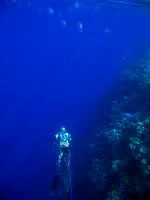Leto wrote:michiguel wrote:Leto wrote:Frank Quisinsky wrote:Hi Martin,
hm ... but Houdini comes from the work the Fire programmer do.
Which one is the clone?
http://users.telenet.be/chesslogik/images/6xyk.jpg
I understand nothing, playing strength alone isn't all. Each programmer can find out improvements ... have a look in ICE ... in my opinion no reason to Support "Houdini".
But it's your tourney!
Allways the same ...
In two years nobody will speak about Houdini, Houdini and Rybka ... now we have two of this examples. A third will come and the Situation will be the same. Again, that is allways the same.
Such People, working with sources of others ... such people coming and going. So many examples we have in computer chess. Seems to be an event for so many computer chess fans.
Not very important ...
Enough nice development are included.
Good luck for all participant programmers and thanks for the work you do for us!
Best
Frank
Very interesting chart, did you make it or did you use a tool? Are there instructions on how to interpret the chart?
I did that, Ola Hansson added the labels, and then the chart ended in chesslogik website, which is what Frank links. See the original for comments:
http://www.talkchess.com/forum/viewtopi ... 52&start=0
The
data was collected by T. Miller as the link provided
more details on how to interpret these plots here
http://www.talkchess.com/forum/viewtopi ... similarity
Miguel
Great work to everyone involved. I hope someone will update it with newer engines such as Stockfish 5 and Komodo 8. I'd also like to see several Rybka versions included.
After reading the instructions, I still don't understand what the numbers at the end of the lines represent. For example why does Onno have a 34 and Fruit 2.2.1 have a 44? From what I read Onno is similar to Fruit 2.2.1 but what do those numbers mean?
Thanks much for creating it Miquel...
I see it as a beautiful mandala of the chess engine circle of life.
Basically, the lower the number is, the more similar that individual of the 'branch' is to the origin (tip)...
Another way to look at is: the closer to the center the better.
Some observations on the chart:
Onno appears to be very closely related to Fruit, that's also well known from CCRL ponderhit stats I believe
Critter and Strelka are very closely related to Houdini (I think it's fair to say that both likely used RE to achieve this result)
Vitruvius is very closely related to Ivanhoe
I completely agree with Martin's decision to not include Fire, it's still too close to Ivanhoe and the rest...
although I have no issue with derivative engines, requiring some degree of originality is a good thing for all.
PS
In case anyone is interested about Fire development:
I promised to release 3.2 sometime this summer but backtracked because of instability and bugs...my apologies for that.
I have been busy re-writing, re-engineering it (8-12 hours per day, which I can afford to do as I'm retired) from the ground up since Fire 3.0 was released last Dec.,
in an effort to clean Ippo from it and create something really original.
24/7 development testing is running on 3 i7 3930K's
2 of the machines were purchased just this year in an effort to provide ample testing cores. I've been using 36 cores 24/7.
I've successfully implemented syzygy bases during the summer, which was a challenge, but now seem to be working well (no crashes for many weeks now).
Most recently I've completed a new and unique SMP implementation (far lighter and faster than the robust yet heavy 800 line Ivanhoe implementation).
I hope to release Fire 4.0 by end of year (or perhaps a bit later if need be)...at that point I'm quite confident it will be strong, and original at the source code level (and probably will deserve a new name).
Norm

